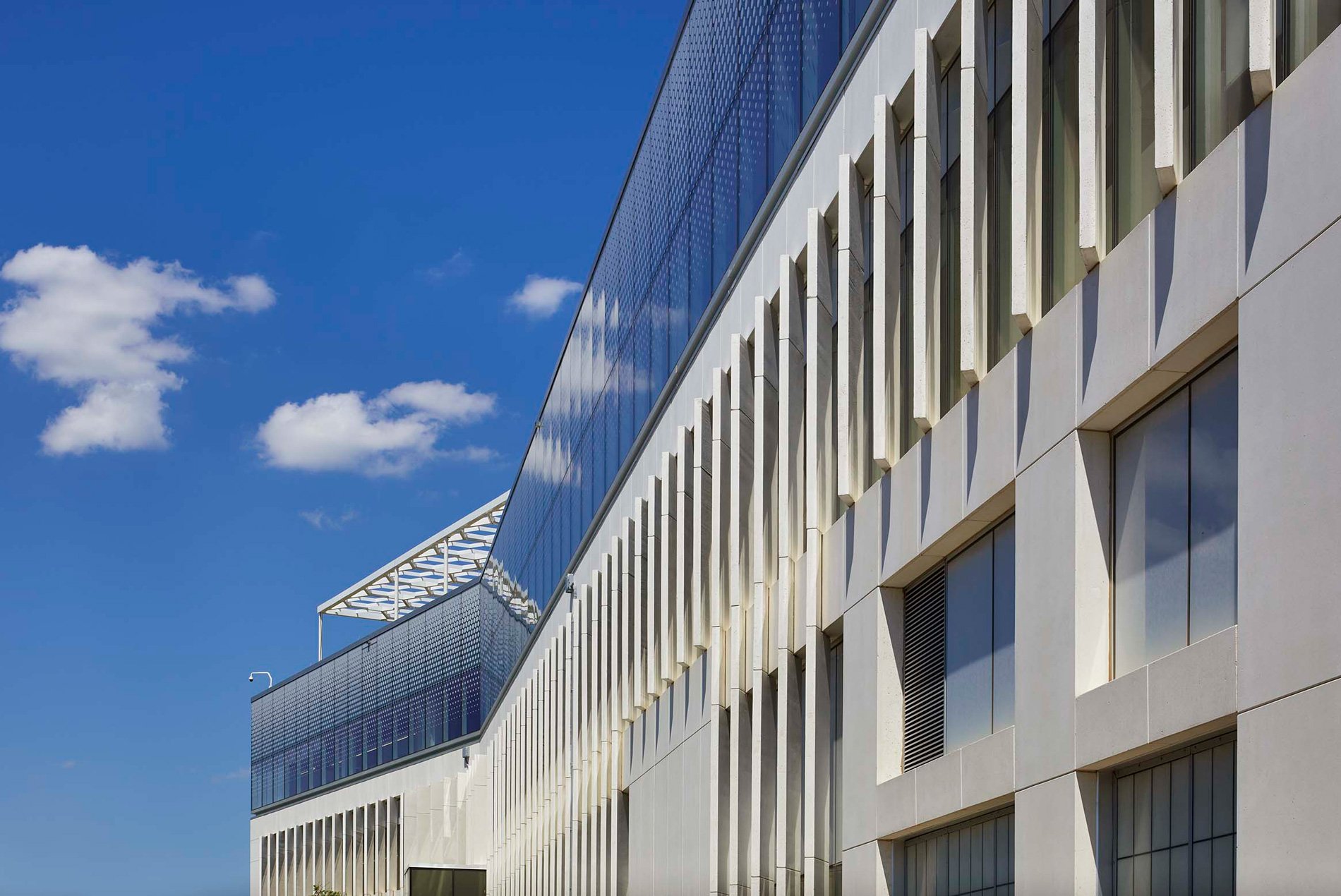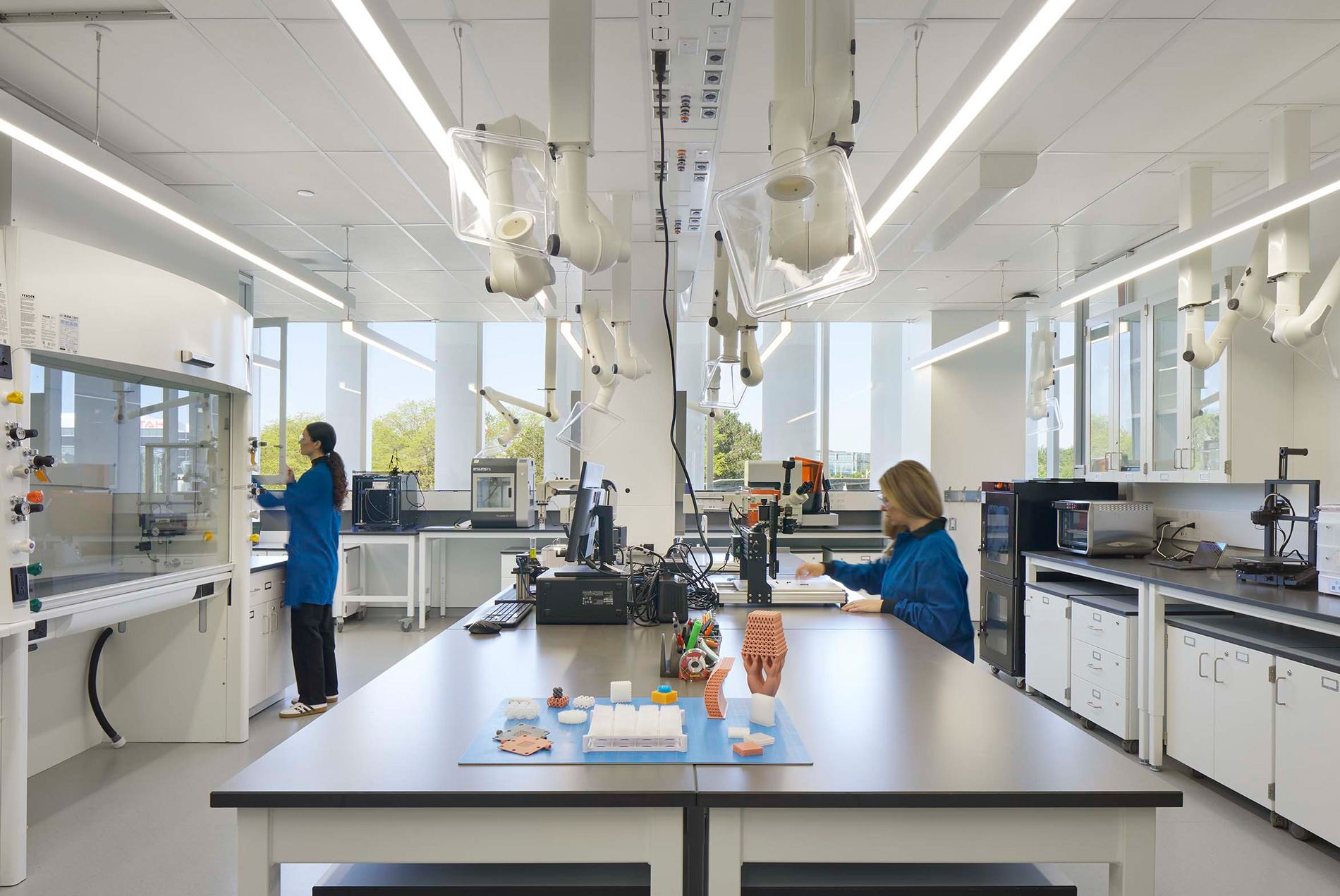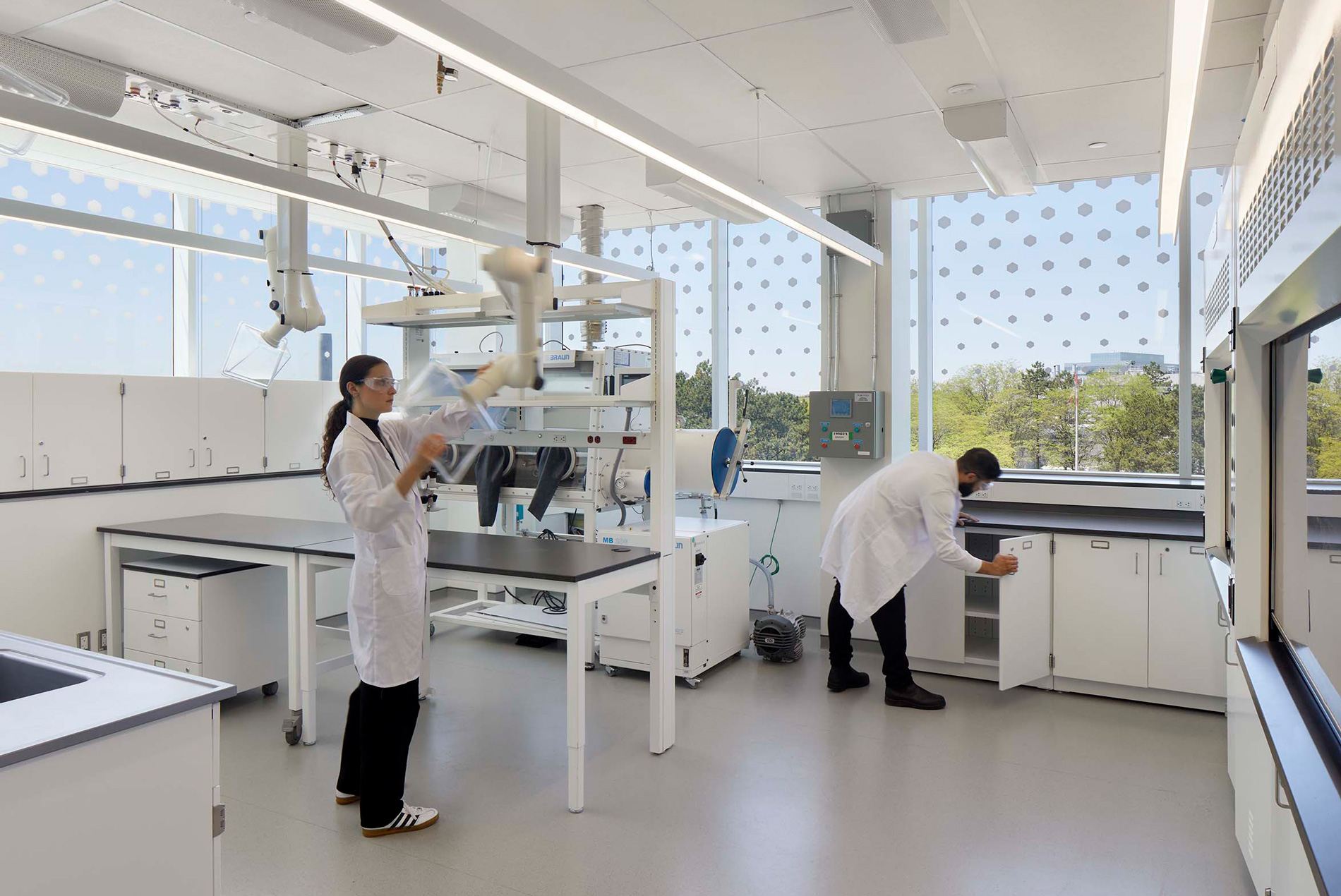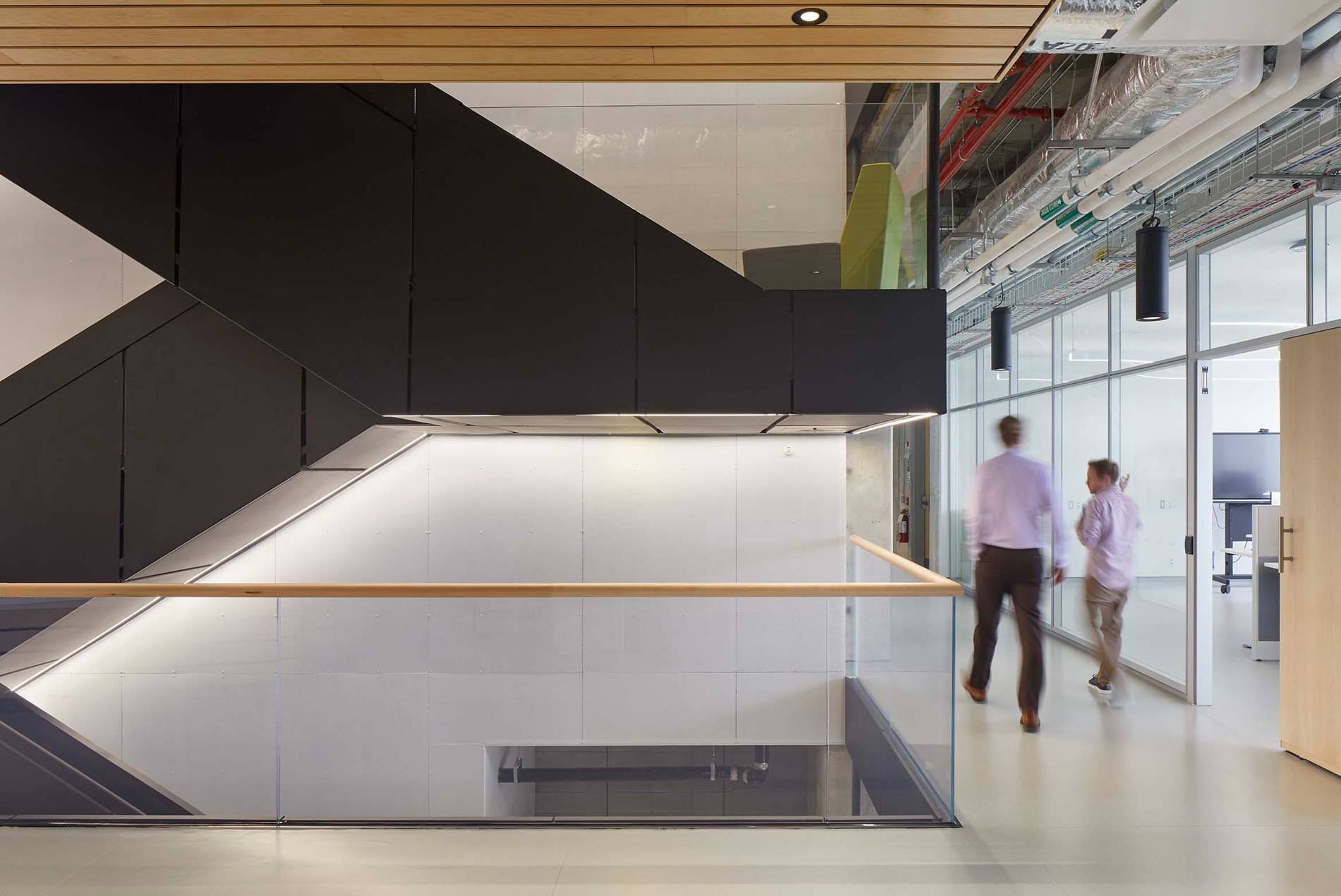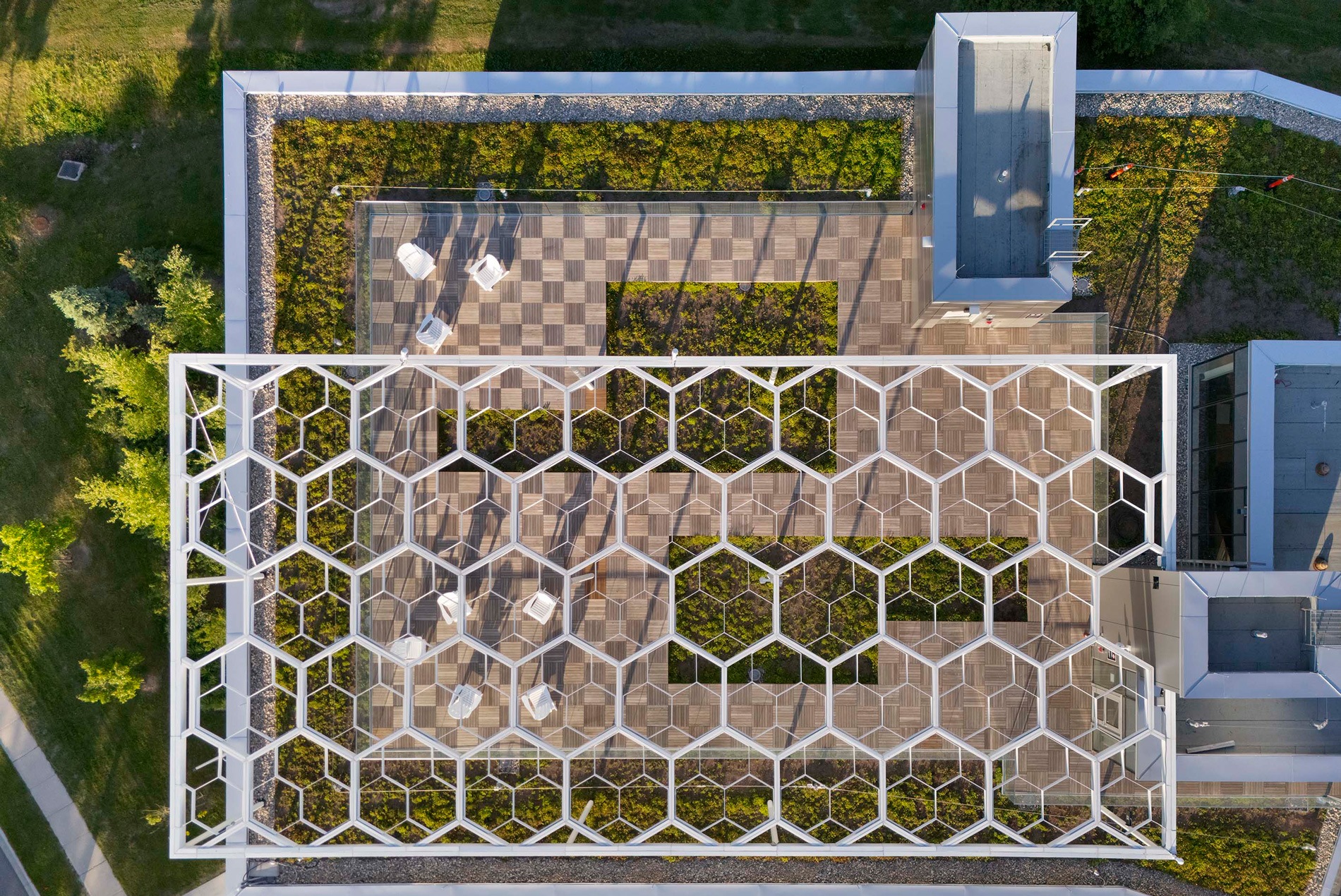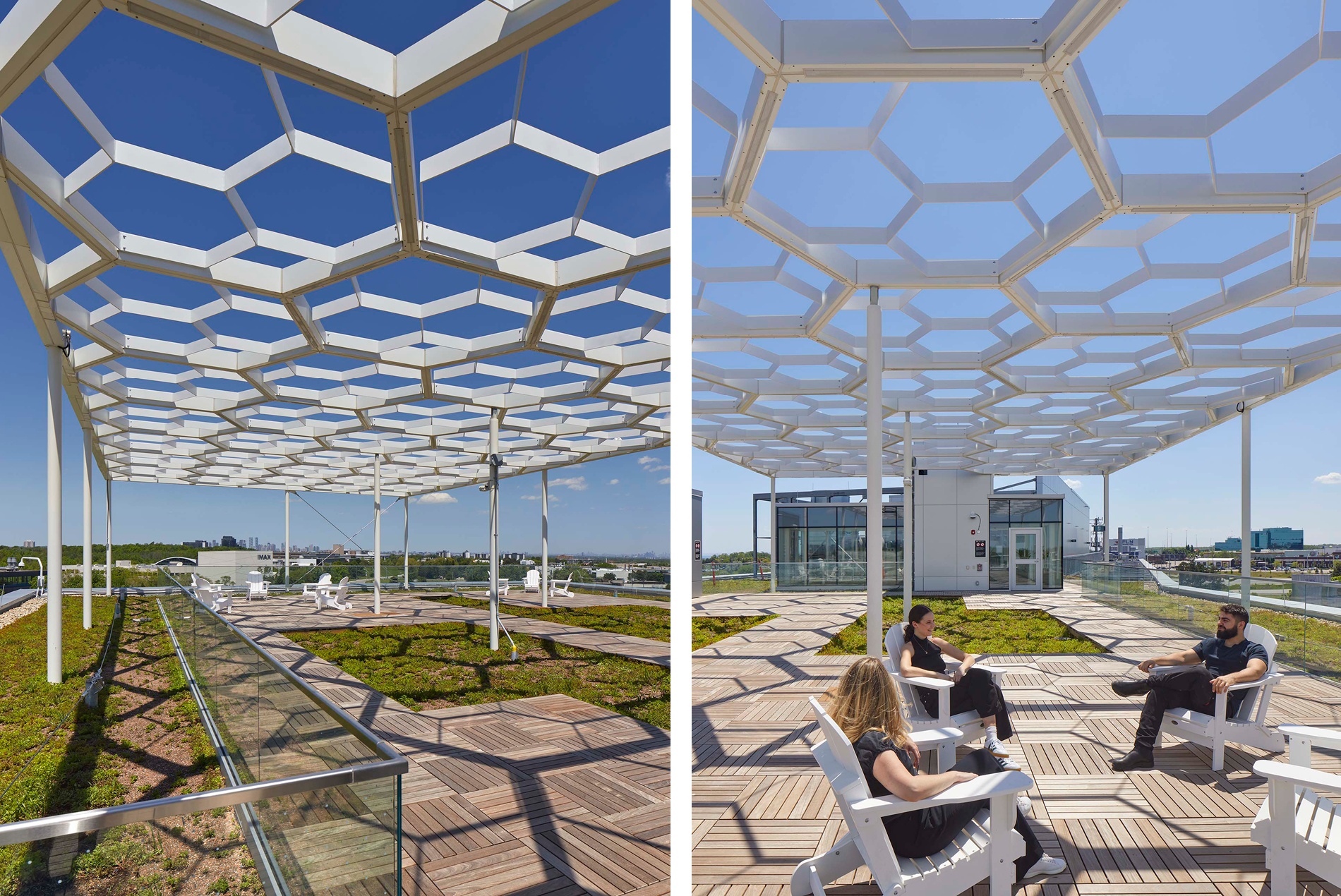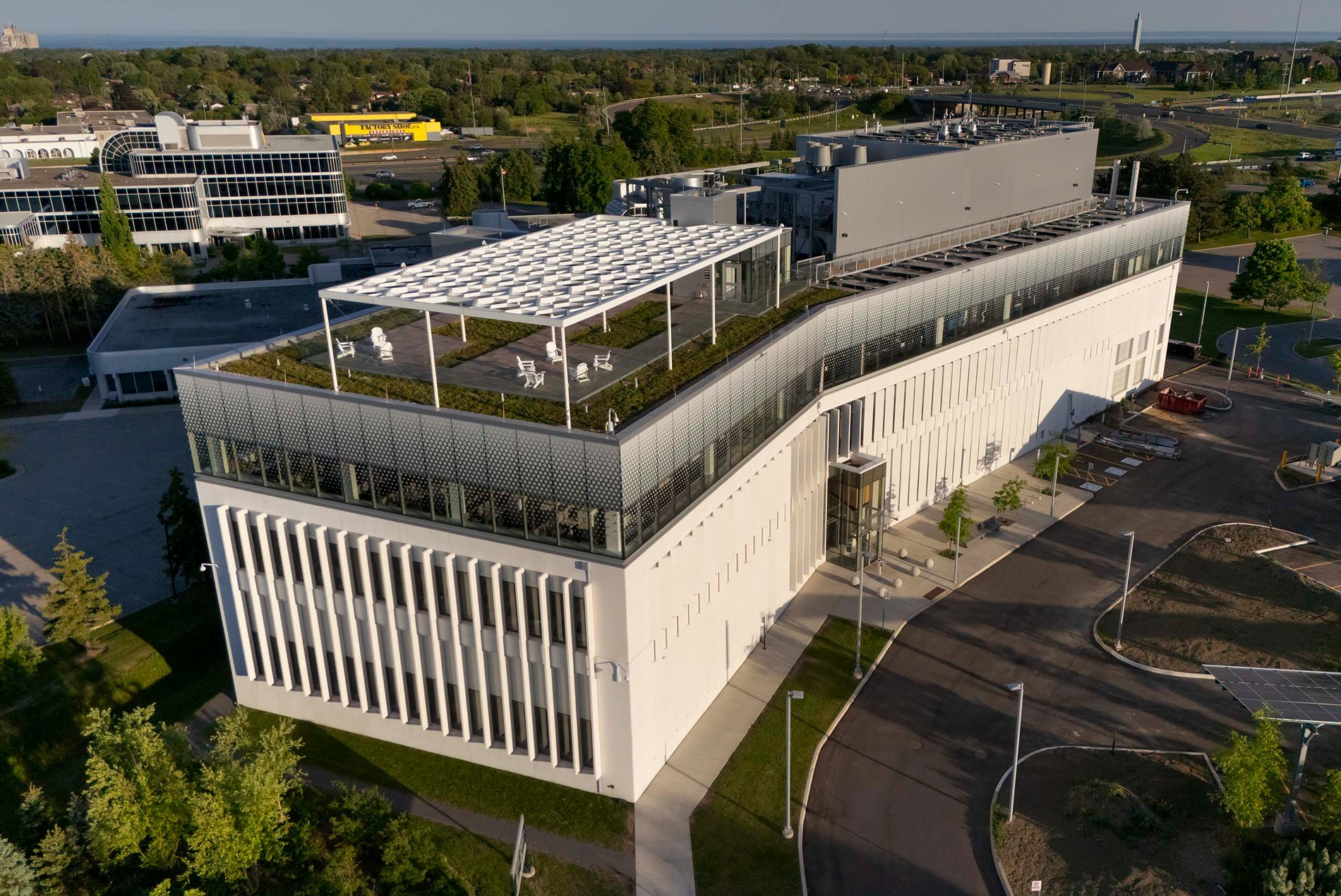The Advanced Materials Research Lab represents an important step in the Laboratories Canada initiative to modernize Canada’s federal science infrastructure. The project transformed an existing research facility into the government’s first laboratory purposely built for AI- and robotics-driven materials research. HOK led the lab planning, architectural design and project management for the renovation delivered through CandaFIRST, a joint venture with Architecture49 and WSP.
The project encompassed a second-floor fit-out, a third-floor addition and a fourth-floor penthouse with a rooftop garden. The facility accommodates 95 scientists and research partners from the National Research Council, Natural Resources Canada and TerraCanada, a multidisciplinary group fostering collaboration between federal science agencies and academic institutions.
As a next-generation hub for clean energy materials research, the facility features clean and wet labs, an AI lab, dry research spaces, support offices and multiple collaborative zones. HOK reimagined the layout to support automated experimentation, AI-focused materials discovery, modular robotics and robust data infrastructure.
A centerpiece of the design is the Material Acceleration Platform (MAP) lab, an advanced research environment that leverages AI, large computational tools and robotics to accelerate materials discovery. Through the MAP lab, scientists can compress the traditional discovery timeline from 20 years to just one or two years. This significant timeline shift requires lab environments that can quickly adapt to accommodate new pursuits. HOK’s lab planners reimagined the MAP’s floorplate to include reconfigurable spaces, retractable partitions and adjacency to mechatronic labs to support rapidly evolving research.
The LEED Gold-certified facility includes a geothermal exchange heat pump system, solar panels, LED lighting and EV charging stations. Designed to support Canada’s broader climate goals, the building is expected to reduce greenhouse gas emissions by approximately 370,000 tons over its 40-year lifecycle compared to typical research spaces of its size and scale.

